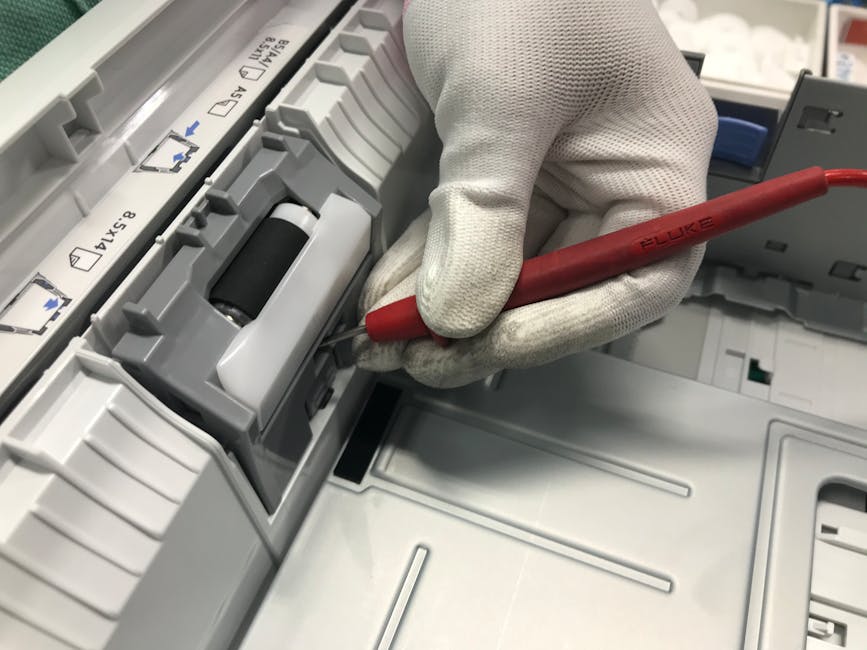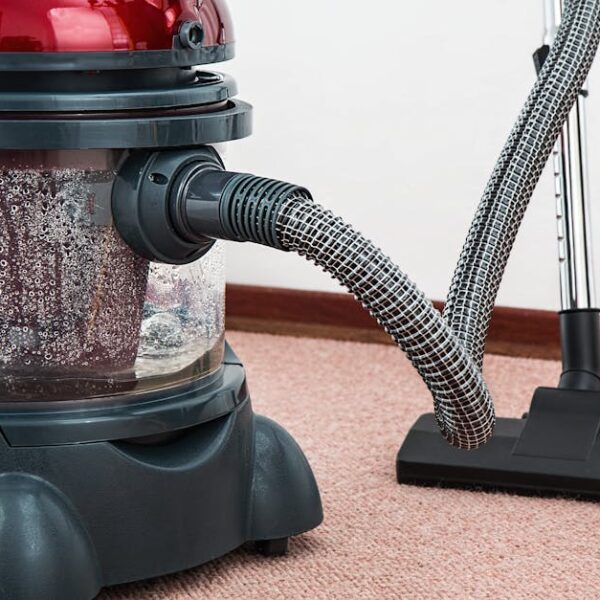The Bissell SpinWave is a highly useful device for maintaining clean floors with minimal effort. When it operates as intended, it can be a timesaving revelation; however, if the SpinWave stops spinning, it becomes a source of frustration. There might be several reasons causing this failure, which we will explore in this article.
Inspecting the Device for Physical Damages
Physical damages or malfunctions can severely impact your SpinWave’s performance. It’s crucial to regularly monitor the device for any signs of wear and tear. You can do a simple visual examination for the following common physical issues:
- Damaged or worn brushes
- Cracks in the outer casing
- Bent or broken parts
When inspecting your SpinWave, be sure to unplug it first to prevent any accidental injuries. Look out for any external damages such as cracks on the surface. Even minor cracks could indicate a significant internal issue. Flip the machine over and inspect the brushes for any visible signs of wear and tear.
Checking the Power Supply
A faulty power supply is another common cause of the SpinWave not spinning. It might be as simple as an unplugged cord or a more complex issue such as a dead outlet. Here’s a quick guide to check your power supply:
- Ensure the SpinWave is unplugged before beginning your checks.
- Examine the power cord for any damage like frays or tears.
- Try plugging your SpinWave into a different outlet to rule out a faulty socket.
Your power cord’s health is vital to the proper functioning of your SpinWave. Always ensure that the cord is wrapped loosely around the device when not in use to prevent the wire from fraying or splitting.
Examining the SpinWave Brushes and Drive Belt
The brushes and the drive belt are essential components of your SpinWave. Any damage or malfunction to these parts can halt the device’s spinning action. Here are some signs to look for:
- Brushes not moving even when the device is turned on
- Brushes moving sluggishly or irregularly
- Visible wear or damages on the belt
Pro Tip: Regular cleaning and maintenance of your SpinWave brushes and drive belt can vastly improve the lifespan of these elements. Gently remove any debris or hair entangled in the brushes after each use. For the drive belt, ensure it’s intact and doesn’t show signs of tearing or wear.
—
Addressing Motor Issues
The motor of your SpinWave lies at the heart of its functionality. When it’s working correctly, it powers the brushes and provides the necessary spin. A malfunctioning motor can inhibit the spinning action altogether. Here’s a simple checklist to determine the condition of your motor:
- Try turning on your device and listen for the usual hum of the motor. If no sound is heard, or if it sounds abnormal, there might be an issue with the motor.
- Check for any unusual smells. A burnt smell could suggest a motor that’s overheating.
- If you’re comfortable doing so, inspect the inside of the SpinWave, but be sure to unplug it first to avoid electrical shocks.
DIY repair of the motor could save you some money; however, it can be a complex task. Here’s a comparison of repairing it yourself versus seeking professional help:
| DIY repair | Professional repair | |
|---|---|---|
| Cost | Potentially lower cost, depending on the repair needed | Probably more expensive, though prices will vary |
| Time | Depends on your repairing skills, could be time-consuming | Typically faster, as professionals are more skilled and efficient |
| Risk | Potential risk of further damage if not done correctly | Low risk, as professionals have training and experience |
Seeking Professional Assistance
If you’ve gone through these troubleshooting steps without success, or if you’re not comfortable tinkering with your SpinWave’s internal parts, it might be time to seek professional assistance.
Reaching out to Bissell customer service or any professional appliance repair company can save you the additional hassle. Here are some benefits of seeking professional help:
- Work performed by professionals with knowledge and experience
- Most professional repairs come with a service warranty
- Guaranteed use of original repair parts
At the end of the day, your SpinWave is a valuable tool and keeping it in top shape is crucial. Whether you fix minor issues yourself or seek professional help, the goal remains the same—getting your Bissell SpinWave back to spinning your troubles away.
Key Takeaway:
- Regular inspection of the Bissell SpinWave for physical damages can prevent significant performance issues.
- The SpinWave’s power supply should be in good condition for it to function optimally.
- Regular maintenance of the brushes and drive belt can help maintain the SpinWave’s spinning capability.
- Immediatly addressing motor issues can help prevent more severe problems that could halt the SpinWave’s operation altogether.
- Seeking professional assistance is advisable when troubleshooting fails or when dealing with complex technical issues.
Maintaining your Bissell SpinWave might seem daunting, especially if you’re not a technical whiz. But remember, many problems are quite simple and can be fixed with a quick check and some minor adjustments. With proper care and timely action, you can enjoy hassle-free cleaning with your SpinWave for a long time.
What Similar Troubleshooting Steps Can I Use for Fixing My Bissell SpinWave if I Encounter Streaks and Leaks?
If you’re facing issues while cleaning, start by ensuring the tank is properly seated and not overfilled. Regularly check the pads for wear and ensure they’re clean. For maximizing results, exploring resources on fixing bissell crosswave streaks and leaks effectively can guide you through common issues and solutions.
FAQs
Q: Are there specific signs to indicate a problem with the SpinWave’s brushes?
A: Yes, if the brushes of your SpinWave do not move when switched on or move sluggishly, you may need to check for any blockages, dirt accumulation, or visible damage.
Q: Can I repair the motor of my SpinWave myself?
A: While it’s possible to repair the motor yourself, it can be a complex task. Unless you have considerable experience or knowledge, we recommend seeking professional assistance.
Q: What should I do if my SpinWave’s power cord is damaged?
A: If your power cord is visibly damaged, it’s best to replace it immediately to prevent any electrical issues.
Q: How often should I clean the SpinWave’s brushes and drive belt?
A: Regular cleaning after each use is recommended. This includes removing any debris from the brushes and checking the drive belt for any signs of wear or tear.
Q: What benefits do I get from seeking professional repair services?
A: Professional repair services offer the expertise of trained technicians, use of original replacement parts, and usually provide service warranties.
Feel free to share this article with others who may find it helpful. For any more insights, explore the other posts on our website.












